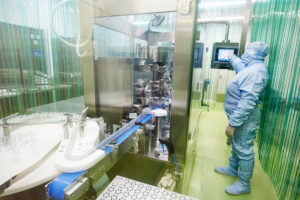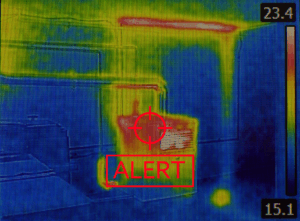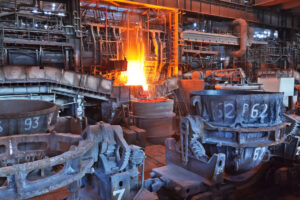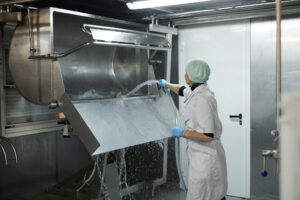Industrial environments aren’t exactly gentle on equipment. Mines, food processing plants, sawmills — these places put everything through the wringer, including your video monitoring system.
And while legacy coax systems (analog) have been the reliable workhorses of security for years, the growing demands for high-quality, scalable, and remote-access video make one thing clear: it might be time to upgrade to IP video.
We’re not here to throw shade at your trusty old analog setup. We get it. Plenty of facilities still rely on these systems, and for good reason.
Let’s dig into when upgrading makes sense, the benefits you’ll see, and how to navigate the challenges without spending a fortune.
Why Upgrade from Analog Coax to IP Video Monitoring?
Think of your legacy analog system like an old-school Nokia phone. It still works, but it doesn’t do half the things a modern smartphone can do.
In industrial environments, where monitoring equipment, safety, compliance, and even security are critical, it might be time for more than basic analog video. If you need detailed footage, viewing in multiple locations with multilevel access, and want to stop buying more DVRs, an industrial IP video monitoring system might be the solution
Here’s where IP video systems shine:
- Higher Resolution: Grainy footage is useless when you need to identify hazards or investigate incidents, and if your system is from before the 2000’s your resolution probably isn’t amazing. IP cameras offer HD, 4K, and even higher resolution to capture every detail.
- Remote Access: With an IP system, you can not only monitor your facility from anywhere, but you can also link all of the cameras on site together to view as one complete system. No more going to each location to view an incident or having to log into multiple online portals to view each system.
- Scalability: Need to add more cameras? No problem. IP systems are easy to scale without overhauling your entire setup.
Real-World Scenarios Where IP Video Makes a Difference
Let’s look at a few examples of industrial environments where upgrading to IP video can make a real impact.
1. Mining Operations
In mining, visibility is often compromised by dust, debris, and harsh lighting conditions. Legacy CCTV cameras struggle to capture clear footage in these environments.
IP cameras with higher resolution and rugged casings can withstand the elements and provide detailed, usable footage, even in low-light conditions.
Additionally, remote access allows operators and others to monitor hazardous areas without putting themselves at risk.
2. Food Processing Plants
Food processing plants need to maintain strict hygiene and safety standards. Legacy CCTV cameras may not capture enough detail to prove compliance during audits or to investigate contamination incidents.
IP cameras can record in HD, making it easier to identify issues like improper handling or equipment malfunctions. Plus, when your IP cameras are paired up with the right IP software, you can integrate with compliance software to streamline reporting.
3. Sawmills
Sawmills are rough environments. Dust, vibrations, and extreme temperatures can wreak havoc on standard cameras and their connectors. Rugged IP cameras, designed to withstand industrial abuse, are a better fit.
These cameras are built to endure harsh conditions. And with the right partner, the worries about latency for operations are resolved. Plus, having an entire system integrated into one mail NVR/software setup helps the right people to view any camera from anywhere in the mill as needed.
Benefits of Upgrading to IP Video
Still on the fence? Here’s a quick breakdown of the key benefits of switching from legacy coax CCTV to IP video.
1. Improved Image Quality
HD, 4K, and higher resolutions mean you can capture every detail — from a small leak in a pipe to someone not wearing the proper safety gear. In industrial environments, where safety is paramount, this level of detail can make a big difference.
2. Remote Monitoring
With legacy CCTV systems, you’re often limited to wherever the DVR/monitor is located for each individual system across the site. IP video systems let you check in on any camera from anywhere within your site — or even off site.
3. Scalability
Adding more cameras to a CCTV system can require significant rewiring. IP systems, on the other hand, are much easier to scale because they do not require pulling coaxial cable for every single camera across the plant.
Challenges of Upgrading to an IP Video System
Let’s not pretend that upgrading to IP video is a walk in the park. There are challenges, especially in industrial environments where downtime can cost $1 million per hour.
1. Network Infrastructure
IP cameras require a solid network infrastructure to operate efficiently. For facilities in remote areas or with outdated networks, this can be a hurdle.
Solution: Work with your camera manufacturer to assess the system you plan to install, and they should be able to give you the network requirements to support it. This is a free service when you work with Opticom Tech.
2. Cybersecurity
Connecting your video system to the internet opens up potential cybersecurity risks. Industrial facilities are increasingly becoming targets for cyberattacks.
Solution: The first line of defense is to create a local area network (LAN), which is not open to anyone to have access. Another line of defense is to make sure that the products that you are purchasing are NDAA compliant. Finally, if you plan to integrate video into your business network, which is usually an “open” network, opt for IP systems with built-in encryption and work with experts to secure your network.
3. Cost Concerns
Upgrading to IP video can seem expensive upfront, especially for large facilities.
Solution: Focus on the ROI. Improved monitoring, fewer incidents, and better compliance can save your facility money in the long run. Work with a manufacturer and installer (if not installing yourself) that are familiar with these kinds of system upgrades and can lay out a plan that is efficient and cost effective. This is a good primer for lowering your cost of ownership.
The Bottom Line
Legacy CCTV systems have served industrial facilities well for years, but the future of video monitoring is IP. Upgrading brings better image quality, remote access, scalability, and smart features that can enhance operator monitors, safety, compliance, and security.
At Opticom, we specialize in helping industrial facilities design or upgrade their video monitoring systems. Our rugged IP and CCTV cameras are built to withstand the toughest industrial conditions, and our team will guide you through every step of the upgrade process. From assessing your site to ensuring your system is secure, we’ve got you covered.
Ready to make the switch? Schedule a free consultation with our experts.







